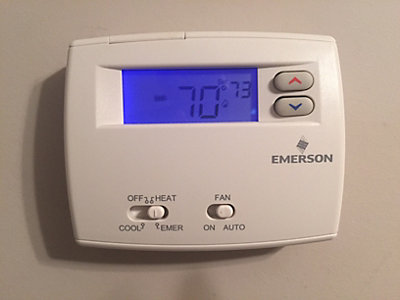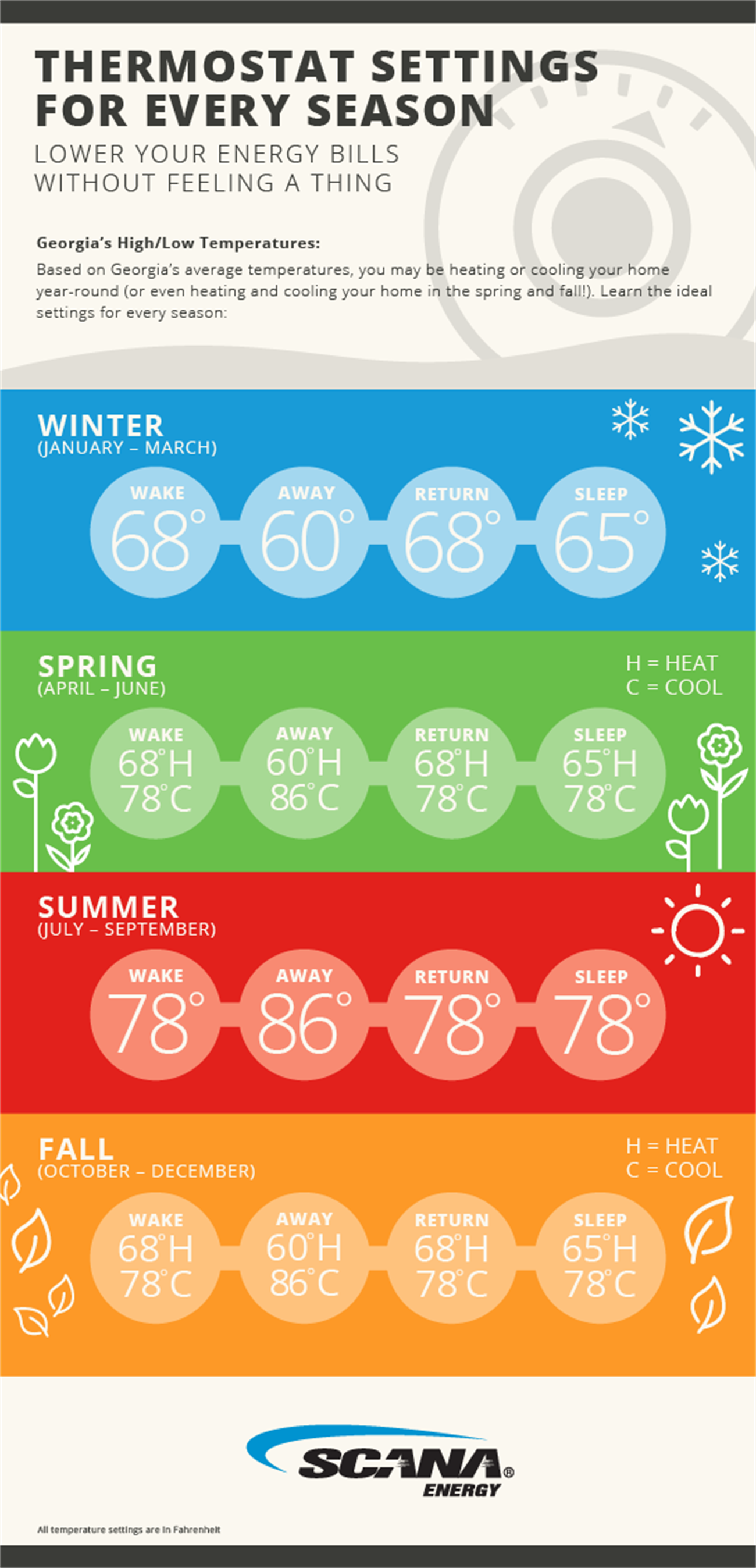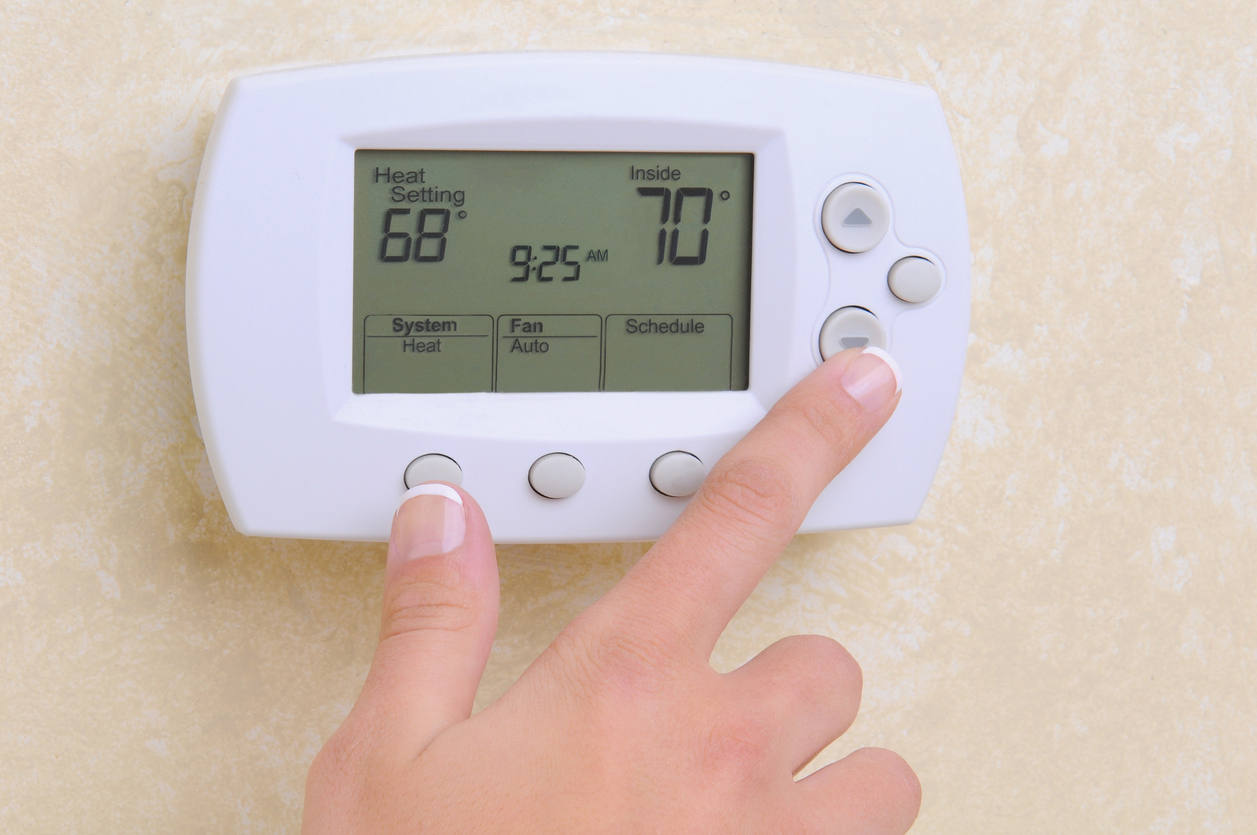Check Best Thermostat Pricing in Amazon
** As an Amazon Associate, I earn from qualifying purchases.
Setting your thermostat properly in winter can save you money and keep you comfortable. But, it can be confusing to know the best settings.
In this guide, we will help you understand how to set your thermostat in winter. You will learn the best temperatures for different times of the day. This will help you stay warm and save on energy bills. Winter can be harsh, but with the right thermostat settings, your home can be a cozy haven.
Whether you have a modern smart thermostat or a basic model, the right settings make a big difference. Let’s explore how to make your home more comfortable and efficient this winter.
Choosing The Right Thermostat
Choosing the right thermostat is crucial for maintaining a comfortable home and reducing energy bills in winter. With various options available, it’s important to understand the differences and benefits of each type. This guide will help you make an informed decision that suits your lifestyle and heating needs.
Manual Vs. Programmable
Manual thermostats are straightforward and user-friendly. You adjust the temperature by turning a dial or pressing buttons. It’s a hands-on approach, and you have full control at all times. However, they can be less efficient since you must remember to adjust the settings regularly.
On the other hand, programmable thermostats offer convenience and energy savings. You can set different temperatures for different times of the day. For instance, lower the heat during the night or when you’re not home. This can lead to significant savings on your energy bills. Who wouldn’t want that?
Smart Thermostats
Smart thermostats take convenience and efficiency to the next level. They learn your schedule and preferences over time, adjusting the temperature automatically. Imagine coming home to a perfectly warm house without lifting a finger. That’s the magic of smart thermostats.
Many smart thermostats can be controlled remotely via your smartphone. You can adjust the temperature from anywhere, whether you’re in bed or on vacation. Some models even provide energy usage reports, helping you understand and optimize your heating habits.
Choosing the right thermostat can make a big difference. Have you ever forgotten to turn down the heat when leaving home? A programmable or smart thermostat can solve this problem effortlessly. Consider your daily routine and comfort needs, and make a choice that will keep you warm and save you money this winter.

Credit: plumblineservices.com
Optimal Temperature Settings
Setting your thermostat at the right temperature in winter can save energy and keep your home comfortable. Optimal temperature settings ensure you stay warm without overworking your heating system. This balance helps to lower energy bills while maintaining a cozy indoor environment.
Daytime Settings
During the day, set your thermostat between 68°F and 72°F. This range keeps your home warm while you are active. Lowering the thermostat even a few degrees can result in significant energy savings. If you leave home, reduce the temperature by 5 to 8 degrees.
Smart thermostats can make these adjustments automatically. They learn your routine and adjust the temperature accordingly. This helps to save energy without sacrificing comfort.
Nighttime Settings
At night, your body generates more heat while you sleep. Set your thermostat between 60°F and 67°F for optimal sleep conditions. Cooler temperatures can improve sleep quality. It also reduces energy consumption, leading to lower heating bills.
Use extra blankets or warmer sleepwear to stay comfortable. A programmable thermostat can lower the temperature at night and raise it in the morning. This ensures you wake up to a warm home without manually adjusting the settings.
Programming Your Thermostat
Programming your thermostat effectively can make a huge difference in your comfort and energy bills during winter. By setting up a smart schedule, you can ensure your home stays warm when needed and save energy when it’s not. Let’s break down how to program your thermostat for optimal winter performance.
Weekly Schedule
Start by setting a weekly schedule. Determine the times you’re usually at home and when you’re away. For example, if you leave for work at 8 AM and return at 6 PM, program the thermostat to lower the temperature during those hours.
In the mornings, you might want a cozy 68-70°F to get ready for the day. Lower it to around 62°F while you’re gone. This adjustment can significantly reduce your heating costs.
When you’re back home in the evening, set it back to a comfortable level. A slight drop again at night, say to 65°F, can help you sleep better and save more energy.
Weekend Adjustments
Weekends often have a different routine. Adjust your thermostat schedule to reflect these changes. If you spend more time at home, you might want a consistent temperature throughout the day.
Consider setting the thermostat to a comfortable 68-70°F during the day and a bit lower at night. If you’re out for part of the day, use the same strategy as your weekday schedule: lower the temperature when the house is empty.
Remember, small adjustments can add up. Every degree you lower your thermostat can save you about 1% on your heating bill. So, experiment with slight changes until you find the perfect balance.
What adjustments have you found most effective for your home? Share your tips in the comments below!
Energy-saving Tips
Winter is here, and as you cozy up inside, keeping your heating bills down becomes a priority. Adjusting your thermostat wisely can save you money without sacrificing comfort. Here are some energy-saving tips that can help you achieve that balance.
Reduce Heating Costs
Lowering your thermostat by just a few degrees can make a significant difference in your energy bills. Set your thermostat to 68°F (20°C) when you’re awake and lower it when you’re asleep or away from home.
I found that setting my thermostat to 60°F (15°C) at night still kept my home warm enough for a good night’s sleep. It was a simple change, but it noticeably reduced my monthly bills.
Consider using a programmable thermostat. It can automatically adjust the temperature based on your schedule, ensuring you don’t waste heat when you’re not home.
Maximize Efficiency
Check for drafts around your windows and doors. Seal any gaps with weatherstripping or caulk to keep the heat inside your home. Drafty areas can make your heating system work harder, increasing your energy costs.
Check Best Thermostat Pricing in Amazon
** As an Amazon Associate, I earn from qualifying purchases.
Use ceiling fans to your advantage. By setting them to run clockwise at a low speed, warm air is pushed down and circulated throughout the room. This can make your home feel warmer without raising the thermostat.
Don’t forget about your furnace. Replace or clean the filters regularly to ensure it runs efficiently. A well-maintained furnace uses less energy and heats your home more effectively.
By following these energy-saving tips, you can enjoy a warm and comfortable winter while keeping your heating costs in check. What changes will you make to your thermostat settings this season?
Maintaining Comfort
Setting your thermostat correctly in winter ensures your home stays warm and cozy. But it can be tricky to find the right balance. Too hot, and you feel stuffy. Too cold, and you may need extra layers. Let’s explore some tips to maintain comfort during winter.
Balancing Warmth
Set your thermostat to 68°F while you’re awake. This temperature keeps your living spaces warm without wasting energy. Lower the temperature by 7-10°F at night or when you’re away. This simple adjustment can save on energy bills. Layering clothing and using blankets can help you stay warm without cranking up the heat.
Avoiding Hot And Cold Spots
Check for drafts around windows and doors. Seal them with weatherstripping or caulk. This prevents cold air from entering your home. Use ceiling fans on low to circulate warm air. This helps distribute heat evenly. Close off unused rooms to avoid heating spaces you don’t use. This focuses warmth where it’s needed most.
Regularly maintain your heating system. Replace filters and ensure vents are clear. This ensures your system works efficiently. By balancing warmth and avoiding hot and cold spots, you can maintain comfort all winter long.
Adjusting For Absences
Adjust the thermostat to 68°F during the day for comfort. Lower it to 55°F at night to save energy. This helps maintain warmth and reduce heating costs.
Properly adjusting your thermostat during absences can save energy. It also ensures your home remains comfortable on your return. Whether leaving for a few hours or days, understanding these settings is key.Vacation Mode
Before you leave for vacation, set your thermostat to “vacation mode.” This mode lowers energy use while keeping your home protected. Most modern thermostats have this feature. Set it to a temperature that keeps pipes from freezing. Typically, 50-55°F works well for most homes.Short-term Absences
For short-term absences, adjust your thermostat a few degrees lower. This means lowering it by about 5-8 degrees. It saves energy without making your home too cold. This is ideal for workdays or day trips. Remember to set it back to normal upon return. This ensures comfort when you get back. These small adjustments can lead to significant savings. They also reduce your carbon footprint. Simple steps can make a big difference. “`Thermostat Placement
Thermostat placement plays a crucial role in maintaining an ideal temperature in your home. Proper placement ensures accurate readings, leading to better energy efficiency and comfort. Let’s explore the best practices for thermostat placement during winter.
Avoiding Drafts
Avoid placing the thermostat near doors or windows. Drafts from these areas can cause inaccurate temperature readings. This leads to inefficient heating and higher energy bills. Also, keep the thermostat away from direct sunlight. Sunlight can cause false readings, making your home feel colder than it is.
Ideal Locations
Install the thermostat on an interior wall. Choose a central location in the house. This allows for more accurate temperature readings. Place the thermostat at eye level, around 5 feet from the floor. This ensures optimal performance and ease of use. Avoid placing it in hallways, kitchens, or near vents. These areas can have fluctuating temperatures, causing inaccurate readings.

Credit: www.scanaenergy.com
Troubleshooting Common Issues
Having trouble with your thermostat during winter? Don’t worry, you’re not alone. Many homeowners face common issues that can disrupt the cozy atmosphere you’re aiming for. Understanding how to troubleshoot these problems can save you time, money, and a lot of frustration.
Thermostat Not Responding
Is your thermostat unresponsive? This can be a real headache, especially when it’s freezing outside.
First, check the batteries. A simple swap can sometimes work wonders. If that doesn’t do the trick, ensure that the thermostat is properly connected to your heating system.
Another quick fix is to reset the thermostat. This can be done by turning it off, waiting for a few minutes, and then turning it back on. If none of these steps work, you might need to call a professional.
Inconsistent Temperatures
Are some rooms in your home warmer than others? This inconsistency can make it difficult to get comfortable.
Check to see if your thermostat is located in an optimal spot. It should be away from direct sunlight, drafts, and other heat sources. A poorly placed thermostat can give inaccurate readings.
You might also need to balance your heating system. This involves adjusting the vents to ensure even heat distribution. If you’re unsure how to do this, a quick call to a heating expert can help.
Remember, a well-functioning thermostat is key to a warm and cozy home. Don’t let these common issues ruin your winter comfort. Have you ever had to troubleshoot your thermostat? What worked for you?

Credit: www.gopreferred.com
Frequently Asked Questions
What Is The Best Way To Set A Thermostat In The Winter?
Set your thermostat to 68°F during the day and lower it at night. Use programmable thermostats for efficiency.
Is 72 Cold In Winter?
No, 72°F is not cold in winter. It is actually quite warm and comfortable indoors.
Can I Set My Thermostat For 74 In Winter?
Yes, you can set your thermostat to 74 in winter. It ensures comfort but may increase energy costs.
Should I Set My Thermostat To Auto Or Heat In Winter?
Set your thermostat to heat in winter for consistent warmth. Auto mode switches between heating and cooling, which isn’t ideal for winter.
Conclusion
Setting your thermostat correctly in winter saves money and energy. Follow the tips in this guide to stay warm. Keep your home comfortable without overworking your heating system. Remember, small adjustments make a big difference. Regularly check and maintain your thermostat settings.
Enjoy a cozy and efficient home all winter long. Stay warm and save on your energy bills. Make these changes today for a better winter experience.
Check Best Thermostat Pricing in Amazon
** As an Amazon Associate, I earn from qualifying purchases.

